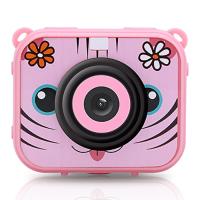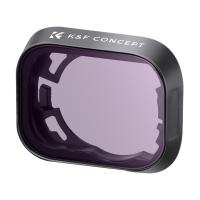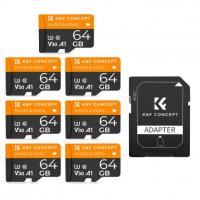How To Use A Sandisk Sd Card?
How to Use a SanDisk SD Card: A Comprehensive Guide

SanDisk SD cards are some of the most widely used storage devices in the world, powering everything from cameras to smartphones, and even gaming consoles. Whether you're using it to expand your phone's storage, back up important data, or capture stunning photos, understanding how to use your SanDisk SD card effectively is essential for ensuring smooth functionality and long-lasting performance. This guide will cover everything you need to know—from choosing the right SD card to troubleshooting common issues.
1. Choosing the Right SanDisk SD Card for Your Needs
The first step in using a SanDisk SD card is selecting the right one for your specific requirements. SanDisk offers a wide range of SD cards, each designed for different tasks. The three main types of SD cards are:
- SD (Secure Digital): Standard capacity cards, typically up to 2GB.
- SDHC (Secure Digital High Capacity): Cards that range from 4GB to 32GB.
- SDXC (Secure Digital eXtended Capacity): Cards with a capacity of 64GB and above.
Speed Class is another critical factor when choosing an SD card. Different speed classes determine how fast data can be written to and read from the card. Here are the most common speed class ratings:
- Class 2: Minimum write speed of 2MB/s. Suitable for basic applications.
- Class 4: Minimum write speed of 4MB/s. Ideal for standard-definition video recording.
- Class 6: Minimum write speed of 6MB/s. Great for recording HD video.
- Class 10: Minimum write speed of 10MB/s. Best for Full HD video and burst photography.
- UHS-I (Ultra High Speed): Faster speeds, up to 104MB/s, making it perfect for 4K video and high-resolution photography.
- UHS-II: Even faster, with speeds up to 312MB/s, often used in professional applications.
Choosing the right SD card depends on what you're planning to use it for. For instance, if you're using it for 4K video recording or professional photography, a UHS-II SDXC card would be your best bet. However, for basic use like storing music or documents, an SDHC Class 10 card may be sufficient.
2. Inserting the SD Card
Once you have the correct SD card for your device, the next step is insertion. Depending on the device you're using, the process will vary slightly:
- Cameras: Most digital cameras have an SD card slot located on the side or bottom. To insert the SD card, gently push the card into the slot until you hear a click. Be sure that the gold connectors are facing down and towards the camera body.
- Smartphones/Tablets: Many modern smartphones use microSD cards, which are smaller than standard SD cards. Insert the microSD card into the tray (often located on the side of the device), making sure it fits snugly. On some devices, you may need to use a pin or paperclip to eject the tray.
- Computers/Laptops: If your laptop or desktop has an SD card slot, you can directly insert the SD card into it. If it uses microSD cards, you may need an adapter.
- Game Consoles: Devices like the Nintendo Switch use microSD cards for additional storage. Insert the card into the provided slot, following the on-screen instructions.
3. Formatting Your SanDisk SD Card
Before using your SanDisk SD card, you may need to format it. Formatting ensures that the card is properly set up to store data and compatible with your device. Many devices will prompt you to format the SD card automatically when it’s inserted for the first time. If not, here’s how you can format it:
- Windows PC:
1. Insert the SD card into your computer's SD card slot or use a USB SD card reader.
2. Open "This PC" or "My Computer" and right-click the SD card.
3. Select "Format" and choose the file system (FAT32 for cards under 32GB, exFAT for cards over 32GB).
4. Click "Start" to begin formatting.
- Mac:
1. Insert the SD card into the card reader.
2. Open "Disk Utility" from the Applications > Utilities folder.
3. Select the SD card and click on "Erase."
4. Choose the format (MS-DOS for FAT32, ExFAT for larger cards) and click "Erase."
- Smartphone:
1. Go to "Settings" and open "Storage" or "Storage & USB."
2. Find the SD card and tap on it.
3. Select "Format" and confirm.
4. Transferring Data to and from the SD Card
Once your SD card is inserted and formatted, you can start transferring data. The method you use will depend on your device:
- From a Camera: Most cameras will allow you to directly transfer photos and videos from the SD card to your computer. Simply insert the card into your computer's SD card slot or use a USB card reader. Afterward, drag and drop the files into your desired folder.
- From a Smartphone: On an Android device, you can move files to the SD card by going to the "File Manager" app, selecting the files you want to move, and choosing "Move to SD card." On iPhones, SD card support is typically limited to external devices via adapters, so you’ll need to use cloud storage or direct transfer from a computer.
- From a Computer: To transfer data from a computer to an SD card, simply copy and paste the files to the SD card's directory. This is particularly useful for backing up files or transferring media to a camera.
5. Using Your SD Card for Extra Storage
One of the most common uses of an SD card is to expand the storage capacity of a device. For smartphones, cameras, and other devices, you can store apps, pictures, videos, and music directly on the SD card.
- Smartphones: On Android devices, you can often set the SD card as the default storage location for apps and media. To do this, go to your phone’s settings and locate the "Storage" section. Here, you can select the SD card as the preferred location for downloads and app storage.
- Cameras: With cameras, the SD card acts as the primary storage for photos and videos. It’s essential to keep your SD card free of other files so that there’s enough room for high-quality photos or HD videos.
6. Maintaining and Safeguarding Your SD Card
To ensure your SanDisk SD card remains in good working condition for as long as possible, it’s important to take care of it:
- Keep It Clean: Avoid physical damage to your SD card by keeping it clean and storing it in a protective case when not in use. Dust and dirt can damage the connectors and affect its performance.
- Backup Regularly: Regularly back up the data on your SD card to a computer or cloud storage. This will safeguard your data in case of a failure or accidental deletion.
- Eject Properly: Always eject your SD card properly from devices to avoid data corruption. This can be done through the device’s operating system, whether on a computer, smartphone, or camera.
- Avoid Extreme Conditions: While SanDisk cards are generally durable, extreme temperatures, moisture, and physical stress can still damage them. Avoid leaving your SD card in hot environments, such as a car on a sunny day, or exposing it to water.
7. Troubleshooting Common Issues
While SanDisk SD cards are generally reliable, there are occasional problems that users encounter. Here are some common issues and their solutions:
- SD Card Not Detected: If your device doesn’t recognize the SD card, try removing it and re-inserting it. If that doesn't work, format the card (be sure to back up any important files before doing so). If the issue persists, the SD card may be faulty, and you may need to contact SanDisk support or consider replacing it.
- Slow Performance: If your SD card is running slowly, it could be because it’s nearly full or there’s too much fragmented data. Try moving some files to another storage device and reformatting the card.
- Corrupted Files: Corruption can occur if the SD card is removed improperly or if it suffers from physical damage. To fix corrupted files, you can use software tools designed to recover lost data, such as SanDisk's own recovery software or third-party recovery programs.
Using a SanDisk SD card is simple once you understand the basics of selecting, inserting, formatting, and managing your files. Whether you're using it to expand storage on your smartphone, back up important documents, or store high-definition video on your camera, an SD card is a versatile and reliable tool. With proper care and maintenance, your SanDisk SD card can provide years of service, ensuring that your data remains secure and easily accessible.






































There are no comments for this blog.